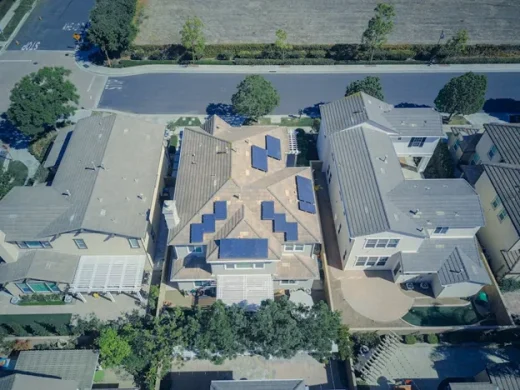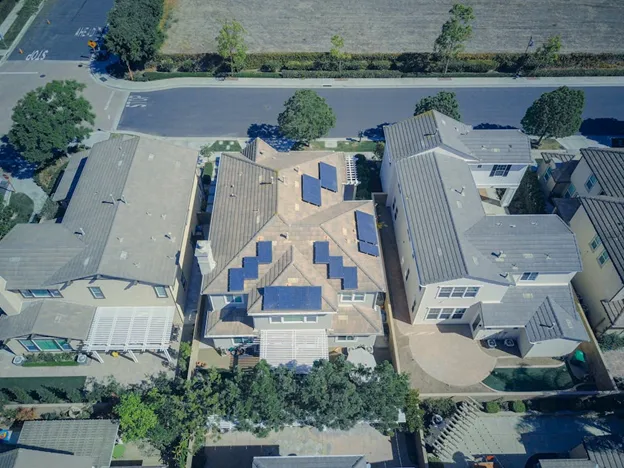Eco-friendly Texas homes, Integrating sustainable architecture and energy solutions
Eco-Friendly Texas Homes: Integrating Sustainable Architecture & Energy Solutions
7 October 2024

Image by Kindel Media from Pexels
Texas is at the forefront of sustainable home design as the world moves toward greener living. With its vast landscapes, diverse climates, and a growing demand for eco-friendly solutions, Texas homeowners are embracing sustainable architecture and energy-efficient technologies.
These innovations reduce residential properties’ environmental footprint and provide long-term energy bills savings. From green roofs to energy-efficient windows, sustainable homes in Texas are reshaping the housing landscape.
This guide explores the latest trends in eco-friendly architecture, energy-efficient technologies, and the importance of selecting energy plans that align with a green lifestyle.
The Rise of Sustainable Architecture in Texas
Sustainable architecture minimizes environmental impact, conserves natural resources, and promotes energy efficiency. In Texas, the move toward eco-friendly homes is driven by several factors, including the state’s varied climate, rising energy costs, and a growing awareness of environmental issues. Today’s homeowners seek solutions combining comfort, aesthetics, and sustainability.
Sustainable design reduces energy consumption, conserves water, and uses environmentally friendly materials. Modern Texas homes increasingly adopt these principles by incorporating design elements like natural lighting, passive heating and cooling systems, and energy-efficient appliances. The result is functional, beautiful homes aligned with sustainable living practices.
Key Design Strategies for Sustainable Texas Homes
Texas’s distinct regions—from the humid Gulf Coast to the arid deserts of West Texas—present unique challenges and opportunities for eco-friendly home design. Here are some key strategies Texas homeowners can use to enhance sustainability:
Solar power integration
Texas has abundant sunshine, making solar power one of the most effective energy solutions for eco-conscious homeowners. Solar panels can help reduce dependence on the grid, lower electricity bills, and decrease a home’s carbon footprint. Many Texans now opt for rooftop solar installations, which can be integrated into a home’s architectural design.
With advances in solar technology, homes are becoming more energy-independent. By producing their own clean energy, homeowners can take advantage of Texas’s sunny climate while making a positive environmental impact. Solar technology costs have also decreased, making it more affordable for households.
Green roofs for energy efficiency
Green roofs, which feature vegetation planted over a waterproof membrane, are gaining popularity in urban Texas areas. They enhance a home’s aesthetic appeal and offer practical benefits. Green roofs provide excellent insulation, reduce the urban heat island effect, and improve stormwater management.
Temperatures can soar during the summer in Texas, and green roofs act as a natural cooling system that regulates indoor temperatures. This reduces the reliance on air conditioning, which in turn lowers energy consumption. Moreover, green roofs promote biodiversity by providing a habitat for local wildlife, further enhancing their ecological benefits.
Energy-efficient windows
Windows are a crucial component of sustainable home design. Poor insulation for windows can result in significant energy loss, especially in Texas’s hot climate. Energy-efficient windows, designed to minimize heat transfer, are vital in maintaining a comfortable indoor temperature and reducing energy use.
Low-emissivity or Low-E glass windows have a special coating that allows light through but not heat. They are particularly effective in Texas homes, reducing the need for the AC in the summer and retaining heat in the winter. Low E windows help create a more energy-efficient living environment.
Sustainable building materials
Choosing sustainable materials is another key aspect of eco-friendly architecture. In Texas, homeowners increasingly opt for locally sourced, renewable, and recycled materials. Bamboo, recycled steel, and reclaimed wood are just a few examples of materials that can reduce the environmental impact of construction.
Using sustainable materials not only minimizes waste but also promotes energy conservation. Many have excellent insulating properties, contributing to lower heating and cooling costs. Furthermore, opting for non-toxic, low-VOC (volatile organic compound) materials improves indoor air quality, making homes healthier and more comfortable.
Energy Solutions for a Greener Lifestyle
While sustainable design is essential, selecting the right energy plan can also significantly impact a home’s environmental footprint. Energy-efficient homes work best with energy solutions that complement their sustainability goals. This is where selecting the appropriate Texas energy plans becomes crucial.
Energy Texas, for example, offers various renewable energy plans for environmentally conscious homeowners to reduce their carbon footprint. These plans often include options for sourcing energy from wind and solar. Choosing an energy provider that prioritizes sustainability supports the shift toward cleaner energy and helps homeowners save on energy expenses over time.
Practical Advice for Texas Homeowners
The first step for those looking to make their homes more eco-friendly is to assess current energy consumption and architectural design. By identifying areas for improvement, Texas homeowners can make smart decisions that benefit the environment and their wallets. These include upgrading to energy-efficient windows and installing a solar-powered system.
Consulting with a sustainable architect or energy specialist can provide valuable advice about the latest technologies and materials. Reviewing and selecting energy plans that align with your sustainability goals is key to creating an eco-friendly home.
Eco-Friendly Solutions Begin at Home
Eco-friendly homes are no longer just a trend—they are necessary in today’s environmentally conscious world. Integrating sustainable architecture and energy solutions can significantly reduce environmental impact in Texas, where climate and energy consumption are major considerations. Homeowners can create beautiful and sustainable spaces by embracing innovations like solar power, green roofs, and energy-efficient materials.
The journey to a greener home continues beyond design choices. Selecting the right energy plan, such as those offered by Energy Texas, ensures that these architectural advancements are fully supported, allowing homeowners to lead a more eco-conscious lifestyle while enjoying significant savings on energy bills.
By combining sustainable architecture with the right energy solutions, Texas homeowners can pave the way for a more sustainable future, benefiting themselves and the planet.
Comments on this guide to Eco-Friendly Texas Homes: Integrating Sustainable Architecture & Energy Solutions article are welcome.
Building Energy
Renewable Energy
Benefits of switching to renewable energy
How can small businesses benefit from renewable energy
How Renewable Energy Empowers Consumers
Building Energy
Teaching your family how to save energy
Benefits of energy assessment for your home
Office Building Articles
Commercial Architecture
, Lombardy, north Italy – The Cathedral
Architects: Populous
New Football Stadium in Milan
Comments / photos for the Eco-Friendly Texas Homes: Integrating Sustainable Architecture & Energy Solutions page welcome.





